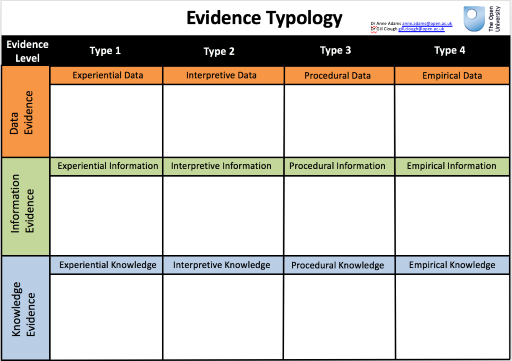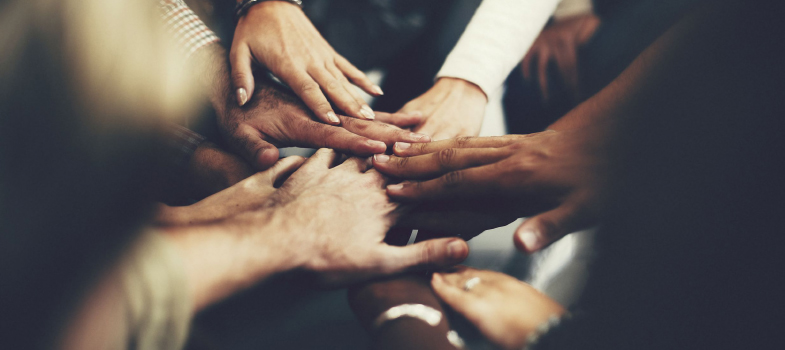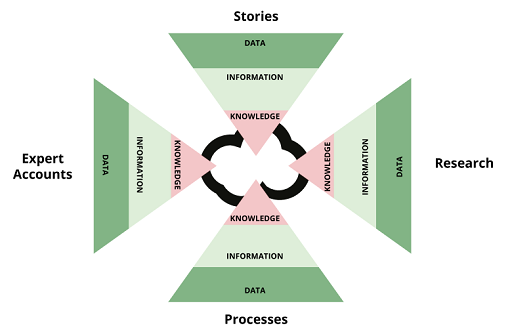5.4 Redeveloping a discussion object
It is important to understand how a

However, as you can see from the table in Figure 5.4, when used in an Evidence Café it enabled only one side of the table to have preferential access to the object. This inspired the creation of an equitably designed evidence typology that could enable different stakeholders to sit around and access the object with equal access. It also focuses the participants on finding links between the different sides of the typology so that the joint ‘cloud’ focus is reached.
In Figure 5.4, you will see there are four pyramids (each an Evidence Pyramid) joined together from different angles. This allows people to sit around a table and contribute their own perspective/evidence to the whole. These could be, for example:
- a researcher adding in research knowledge
- a migrant giving their own experiences as story data
- an immigration officer giving information about Visa processes
- a government official providing expert informational accounts on decision making for policies.
This representation of the evidence typology discussion object allows participants to link findings between the different forms of evidence. For example, it supports stakeholders connect research knowledge with the migrants’ experiences, with the immigration officers’ visa processes or with the government officials’ decision making?
There are four types of evidence in the evidence typology:
Empirical research : in-depth studies – e.g. local business surveys or academic migrant study.- Experiential (stories): relevant situations and experiences – e.g. local entrepreneurs’ experiences of working with foreign companies.
Procedural processes : processes, methods, ‘know-how’ – e.g. Kenyan immigration processes for capturing and categorising migrants.Expert interpretive analysis : how analysts interpret data, assign purpose and produce judgments – e.g. understanding migrant flows in the context of Kenya’s changing economic strategy.
 Activity 5.2 Discussion objects for migration
Activity 5.2 Discussion objects for migration
Think of some other discussion objects that would be valuable in an Evidence Café on migration issues. How could you adapt one of the two discussion objects to be valuable for your specific migration topic? How would you adapt them to support future decision making?
We are all likely to come up with different responses to these questions. When the MIAG team first started to plan the Evidence Café in Kenya we had a lot of background on evidence levels and typologies. Some of the team felt this was too detailed and ‘academic’ so we cut it back and tried to get to the evidence typology table as quickly as possible. People wanted to talk about their migration experiences, so this is what we did.
5.3 Evidence typology as a discussion object

